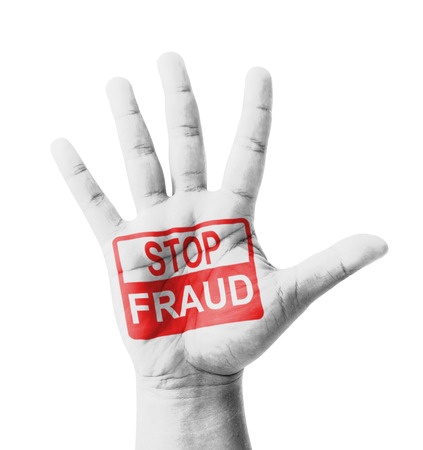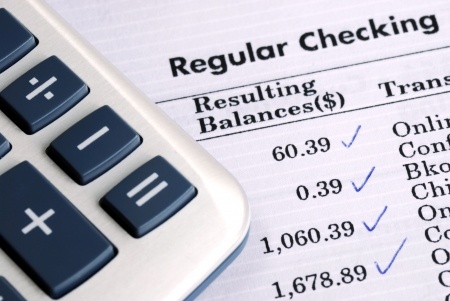Merchant Cash Advance Underwriting For Humans
 There is no doubt that the merchant cash advance industry has undergone significant expansionary changes within the past decade. The first-mover advantage is past its prime in this industry and no longer proves to be as profitable as it once was for some of the earlier entrants to the market.
There is no doubt that the merchant cash advance industry has undergone significant expansionary changes within the past decade. The first-mover advantage is past its prime in this industry and no longer proves to be as profitable as it once was for some of the earlier entrants to the market.
Although the alternative lending industry still has not garnered enough attention for change and reform from policymakers, it has attracted attention from Wall Street and wealthy Main Street investors alike. As today’s merchant cash advance providers continue to grow their capital bases, these larger players have the option and arguably an incentive to explore new products that will help them capture a larger market share of small businesses financing needs and ultimately will help them improve their bottom line.
Several of the more established companies have continued to grow either organically through strategic leadership and good timing, while others have been able to grow and cover new markets through mergers and acquisitions. Of all changes that have been affecting this space, one of the more interesting ones is the introduction of proprietary software used by some of these companies that will allow them to pre-qualify a merchant based on an online application, rate their credit risk, briefly scan submitted bank statements, merchant account statements and financial statements.
Several companies in this industry have invested extensively into making this process a reality, believing it will help them excel against their competitors by creating an economies of scope situation.
Not so fast though…
While automation can help make a company more efficient by converting applications into funded accounts, it can also create a gap in a company’s risk management policies if the company does not have steps in the process to reduce two important risks in any financial services business:
a) Information Asymmetry
b) fraud detection.
For those companies that still use human underwriters, I have compiled some pointers on my experiences relating to things I pay tremendous attention to when underwriting new accounts that help me spot fraudulent documents.
 The starting point in the fraud detection process begins with the application and a thorough review of the information provided. Google everything. Make sure the business is not reported as being closed, that the merchant is not going through extensive litigation that could result in jail time or in the business being sold off to another individual. Information on the internet is bountiful, and most of it is completely free. Unlike traditional financial services companies, he who pays the piper calls the tune does not apply in the alternative finance industry. Merchants are almost completely unbound with how to spend their advance, and sometimes engage in reckless borrowing to achieve their means, oftentimes altering documents in the process.
The starting point in the fraud detection process begins with the application and a thorough review of the information provided. Google everything. Make sure the business is not reported as being closed, that the merchant is not going through extensive litigation that could result in jail time or in the business being sold off to another individual. Information on the internet is bountiful, and most of it is completely free. Unlike traditional financial services companies, he who pays the piper calls the tune does not apply in the alternative finance industry. Merchants are almost completely unbound with how to spend their advance, and sometimes engage in reckless borrowing to achieve their means, oftentimes altering documents in the process.
Credit Reports
In my experience with underwriting, many of the fraudulent accounts that I view have owners with either bad credit, limited credit history or no credit history. Furthermore, pay close attention to any fraud alerts on the 1st page of the report, and especially the date of the alert if it is fairly recent. Lastly, pay close attention to the number of recent inquiries on the credit inquiries. Today’s small businesses receive dozens of inquiries from cash advance companies and ISOs. While the inquiries themselves do not outright indicate any fraud and may even be encouraged by ISOs looking to get their merchant the best deal, the combination of a fraud alert and say 20 inquiries from competitive cash advance companies could signify that the other competitors found something that may not add up on the file and will warrant a close eye on the other submitted documents.
Bank Statements
Through community websites, fraudulent bank statements, merchant account statements, or any other type of statement are made easily accessible to purchase. The number of submitted fraudulent bank statements that I have seen within the past year has dramatically increased. Some statements can take as little as 5 seconds to determine if they are fraudulent and there are others that are so clever that they can take close to an hour of close scrutiny to find.
I personally use Adobe Acrobat to read and navigate through bank statements. Some of these statements are doctored so well that you may have to zoom in upwards of 300% to find a comma that should actually be a period to separate dollars from cents to put as a simple example. Be sure to quickly glance over all the statements, checking to see that you have a complete page sequence and the page count is correct.
One of the more common amateur mistakes is to use a prior year’s bank statement and simply change the year to read current year. Fortunately for underwriters, that process is not as simple as it seems on the surface. Not only do they have to make changes on the header of every page, but many times banks and credit unions make announcements throughout the statement for the current year. Other statements include full dates (month, day, year) on some line items usually in the withdrawals section but sometimes in deposits, subtotals and totals. This is more work for merchants to alter, and leaves them more prone to forgetting to change one of the dates.
 Just one inconsistency that happens to somehow conveniently flow with the rest of the statement can be the only evidence that you need. Some of the other common amateur mistakes include poor spelling throughout the statement, whiting out of numerical figures, inconsistent margin changes, font changes, and repetitive use of the same check numbers paid month after month (excluding those with default 0’s or 1’s issued by bank tellers directly).
Just one inconsistency that happens to somehow conveniently flow with the rest of the statement can be the only evidence that you need. Some of the other common amateur mistakes include poor spelling throughout the statement, whiting out of numerical figures, inconsistent margin changes, font changes, and repetitive use of the same check numbers paid month after month (excluding those with default 0’s or 1’s issued by bank tellers directly).
Some of the more well hidden fraud can usually be found by comparing the summary page and last page of the bank statement to other statements. Typically, most banks and some credit unions offer you a snapshot of the starting balance, which should generally match up with the ending balance of the previous month. If it doesn’t, you should look for any transactions from the previous month that did not settle until the current month. If there is none, this is usually a red flag indicating that the merchant forgot that statements are continual time series financial data whose totals carry on to the following month.
Also, be sure to check that the summary data at the beginning of each statement matches the counts for deposits, withdrawals, and checks written each month. I’m also particularly skeptical when I see unusual consistency in the number and value of summary data with very little bank activity. Such an example would be a bank statement that consistently shows only 3-4 deposits each for over $100,000 and miniscule withdrawals such as a few small checks or a handful of fast food POS debits comprising all withdrawals for example. The business could be legitimate and the merchant simply submitted the wrong bank statement, which does not allow you to see the better cash flow picture from first glance, or the merchant could have simply taken the easy way out in creating a basic bank statement. Again, it is helpful to reference the type of business that you are underwriting in order to see if these transactions make sense. I am much more willing to acknowledge and accept this type of statement from a construction company per se than a brick-and-mortar retail shop.
 Final Tips
Final Tips
Don’t let analysis paralysis stop you from sticking to your conviction on an account. Underwriting is not directly focused on generating revenue for a firm, but rather minimizing bad debt expenses at the end of the day. If you feel like something is off on the statements that you are looking at but you just cannot find what is wrong, step away from your computer for a few minutes and focus on something else. When you return to your computer, you’ll better be able to scrutinize the statements and more likely to catch something miniscule that you may have missed from closely going over the statements again and again.
You can also ask fellow colleagues to look at the statements. Try experimenting and let at least one know that you have suspicions on a particular account and if they could take a close look at the statements; it also helps if you have someone else simultaneously looking at the same account but do not tell them about your suspicions on the account. If they also have a strange feeling about the statements, chances are that there is something off that warrants even closer examination. Lastly, when in doubt try to confirm the statements with the source of the statement. It may be beneficial to request that your merchants provide you with a bank representative’s contact information so that you can verify the legitimacy with the bank yourself.
Another source of action would be to have a merchant provide your company with a view only access of the account. This would also allow you to directly confirm the legitimacy of the statements eliminating any left over suspicions. The only downsides to these last two approaches is that they make take some time to complete, oftentimes a merchant is not willing to wait a few more days and will willingly go to a competitor who can promise to have them funded within 24 hours. In these cases, your last line of defense comes down to the merchant interview part of the process.
Last modified: December 11, 2014Pierre Mena is based out of New York, NY and is an experienced Underwriter employed with Rapid Capital Funding. He holds a bachelor’s degree in finance from the University of Central Florida and is currently an MBA candidate at Pace University’s Lubin School of Business. He can be reached at pmena@rapidcapitalfunding.com































